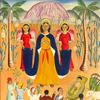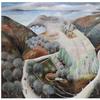As Long as the Waters Flow
- March 30, 2021 07:57
“I had learned a great deal about my tribal customs from my father and my mother, and the more I learned the more I wanted to put it down on canvas. That’s pretty much how it started.”
— Allan Houser
Allan Houser was born Allan Capron Haozous. His family name, Ha-oz-ous, refers to the sound a plant makes, when it is pulled up by its roots, the moment the earth gives way.
Allan’s parents, Sam and Blossom Haozous, were Chiricahua Apache. Sam’s father lived in southwest New Mexico. His first cousin was the legendary Apache leader, Geronimo.
During the 1870s and 1880s, Geronimo resisted the United States Army’s efforts to confine him, and the rest of the Apache, to designated reservations. In a series of “breakouts,” Geronimo and his followers eluded U.S. forces, and escaped to Mexico, where they made their final stand.
After years of resistance, Geronimo surrendered to the U.S. Army in Mexico in 1886. Geronimo and over a thousand other Apache were then loaded up for transportation by train. Many were loaded into cattle-cars. When the trains came to a stop, the Apache found themselves in prison camps in Florida and Alabama.
Many Apache died as prisoners. Among the children imprisoned in Florida was Allan’s father, Sam Haozous. Allan’s mother, Blossom, grew up in a prison in Alabama. Like Geronimo himself, and two hundred and fifty other Apache, Sam and Blossom were eventually sent to Fort Sill, Oklahoma, where they would remain prisoners for another twenty years. In late 1913, Sam and Blossom were finally granted their freedom. The following year, Allan was born. He was the first child in his family to be born out of captivity.
Allan grew up on a farm. An inquisitive child, he loved being outdoors. He developed an early interest in drawing, and then quickly took up painting. As a way of expressing his ideas about the past, about his family, and about where he had come from, Allan devoted himself to making art from an early age.
When he was a student in the 1930s, Allan changed his last name from Haozous to Houser. The change was “suggested” by school administrators. Although Allan found his school restrictive, and the art lessons unimaginative, he began to enjoy some recognition for his artistic ability when he showed his watercolor paintings at an exhibit at the Museum of New Mexico.
After graduating, Allan was commissioned to paint murals in the main office of the U.S. Department of the Interior. Despite this success, work as a painter was hard to come by. After he got married, and started a family, Allan relocated to Los Angeles, and from 1942 to 1947 he worked as a pipefitter’s assistant. During this period, Allan also befriended several students and faculty members at Pasadena Art Center. He started to explore a range of media, and develop his own take on modern sculpture.
In the words of his biographer, Barbara Perlman, Allan was an “unswerving idealist and romanticist.” He believed “in the nobility of ‘high’ art… He desired to paint the illusion of reality and to carve human or animal forms naturalistically, in the round. Gradually, as his affinity for three-dimensional expression asserted itself, he painted less and ‘found my soul,’ as he was to say, in sculpture.”
Allan’s first major sculpture, Comrade in Mourning, was completed in 1948. Allan conceived it as a memorial to Native Americans who gave their lives in World War II. He carved the sculpture out of Carrara marble. Comrade in Mourning effectively launched Allan’s career as a sculptor.
According to Perlman, Allan emerged as “a herald of humanistic renascence in American sculpture… at the forefront of a new flowering of artistic expression nourished by the heritage of generations of Original Americans.”
After teaching in Utah for eleven years, Allan joined the faculty of the Institute of American Indian Arts (IAIA) in Santa Fe, New Mexico. There he established the sculpture department, and then set to work creating more and more monumental art, art on a scale far more ambitious than anything he had attempted before.
At the age of sixty-one, Allan retired from teaching, in order to focus exclusively on making art. During this period, his most prolific period, Allan produced almost a thousand sculptures in stone, wood, and bronze. He created sculpture for the United Nations, the National Portrait Gallery, and the Smithsonian Institution. In 1989, his thirteen-foot bronze monument, As Long as the Waters Flow, was dedicated on the grounds of the Oklahoma State Capitol. In 1992, Allan Houser became the first Native American awarded the National Medal of Arts.









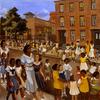
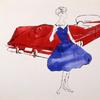

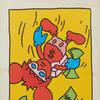


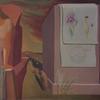
100x100_c.jpg)
